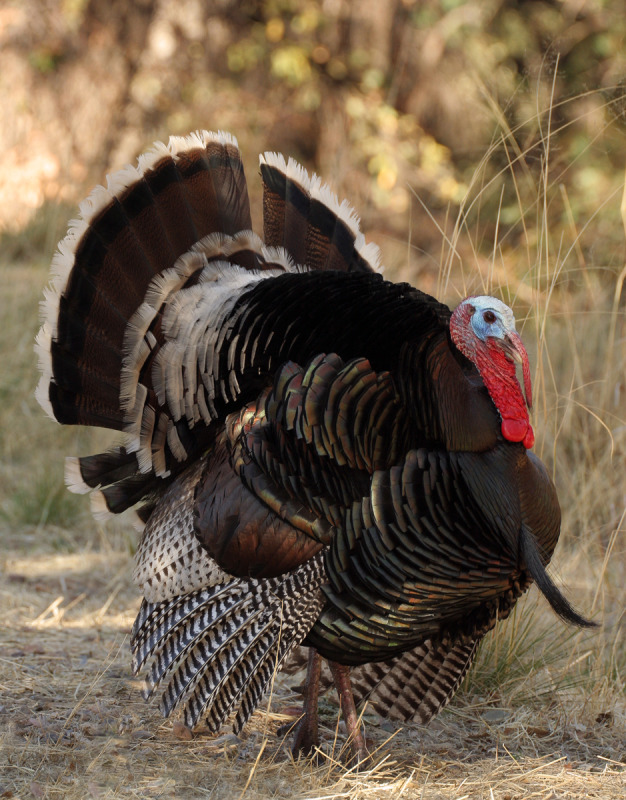How do you choose your turkey? It might be by weight. Perhaps it is from a favorite farm. Or it could be a brand that you like. But if you were a female turkey, you’d be looking at the snood.
The snood is a fleshy appendage that attaches just above the beak. When tom turkey is just chilling, his snood can be fairly short, but when he struts for the ladies his snood engorges with blood and hangs awkwardly off his bill. It’s a hen head turner.
This bit of bird bling-bling would probably make Mr. Darwin smile with thoughts of sexual selection. Darwin was first to suggest that mate choice and competition for mates might be a selective pressure that shapes the evolution of populations. If this is true, why would female turkeys prefer a big snood? Is this simply a sexy ornament or is it perhaps a signal of worthiness?
Richard Buchholz, a biologist from the University of Mississippi, pondered these very questions and Wild Turkeys proved to be a perfect study animal. Males mate with multiple females (called polygyny), and the sexes look very different (sexually dimorphic). Buchholz designed some fancy mating tests, checked out the health of the males, and eureka, the answers to snood fashion were discovered.
First, Buchholz found a non-sexual function for the bare parts on the head. They are crucial for cooling down strutting tom when he is exerting himself on a hot day. Snood or no snood, he needs his radiator. So there is a clear physical reason for the bare skin. But that still doesn’t explain the long snood.
He did show that a long snood is indeed selected by females, but males also select for it. Females were attracted to a long snood and males deferred to other males with longer snoods. But what is it about a long snood? What does it signal? Healthy, wealthy or wise?
It turns out that the longer the snood a male has the fewer intestinal parasites he carries. Long snooded males are more resistant to parasitic infections. Buchholz suggests that if this is true, it might be a case of females choosing males with good genes. And males that are free of parasites are probably more dominant over other males. Short snooded males that defer to long snoods might be able to assess the competition before fighting with them and avoid wasting energy in fruitless fights that they are sure to lose to the healthier snood.
Enjoy the snood and have a Happy Thanksgiving!
More Links for Turkeys
- Wild Turkey information from the Vermont Breeding BIrd Atlas, a project of the Vermont Atlas of Life.
- See where turkeys have been reported this month in Vermont and across their range in Vermont eBird, see photos and videos and listen to sounds, and add your own sightings too.
- Fact sheet about turkeys from the Vermont Fish & Wildlife Department.
- Once gone, wild turkeys make a comeback in Vermont – Burlington Free Press


Pingbacks (1)
[…] Tanto los pavos machos como las hembras tienen snoods, las protuberancias rojas caídas que cubren sus picos. Hay pruebas de que una snood bien desarrollada es en realidad un signo de mayor resistencia a las enfermedades y las bacterias. Y eso no es todo. Para los machos, la snood es una parte importante de la jerarquía social. En realidad, la snood del macho se llena de sangre y se alarga durante la época de apareamiento, y los investigadores han observado que las hembras eligen como compañeros a los machos con snood largo una y otra vez. […]